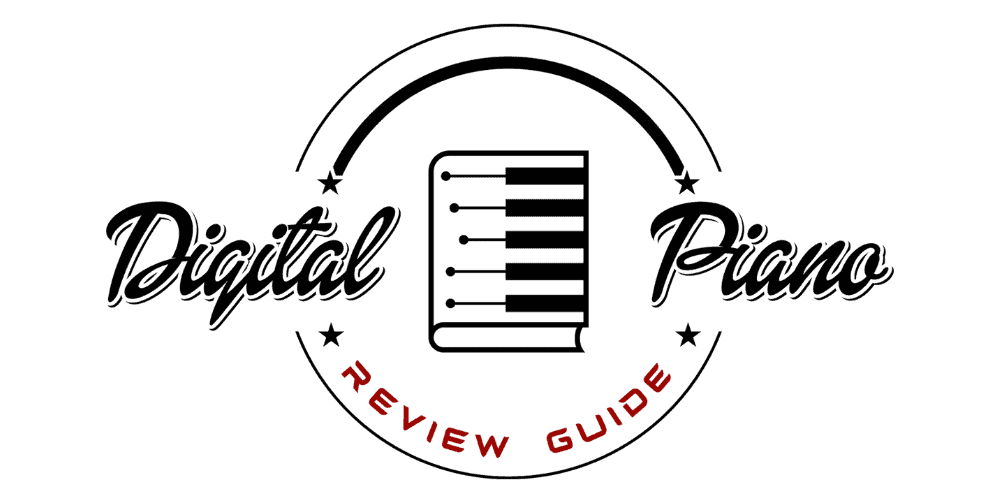Yamaha PSR-S770 review

In a world of very affordable advanced software and hardware, manufacturing keyboards that double as music software (keyboard workstations) is a risky marketing maneuver. The reason I say this is because music production software packages, such as Logic Pro X, Ableton Live, Reason, etc., typically fall within the $200 to $800 price point, but keyboard workstations can be upwards of $2000.
The whole point of using a keyboard workstation is to have music production software at your fingertips, for it is built into the keyboards themselves. While these keyboards are impressive pieces of hardware, it is becoming increasingly more difficult for them to survive in an era where professional music software for a home computer boasts a very competitive price point while offering more versatility as well. Each consumer has to weigh the options: a keyboard workstation with built in software or a professional digital audio workstation (DAW)?
The Yamaha PSR line offers versatile keyboard workstations that are impressive in their own right. The offering of built-in tracks, styles, and editing parameters is a delightful prospect for the songwriter, producer, or mixer.
In today’s article, I’ll be looking at the PSR-S770 in this review. It’s the middle model in the PSR line, and we’ll examine its features, playing style, and whether its overall effectiveness justifies its price point.
To better help you, please use the interactive table below to directly compare the Yamaha PSR-S775 against other notable keyboards on the market.
| Photo | Model |
|---|---|
 | Yamaha PSRSX700 |
 | Roland E-A7 |
 | Casio WK-6600 |
 | Roland E-A7 |
 | Korg EK-50 L |
Keyboard Workstations
There is often an element of confusion surrounding keyboard workstations. Questions get asked about how it differs from a normal electronic keyboard. I think it’s important to address the function and intended purpose of a keyboard workstation and how it differs from an electronic stage piano or synthesizer before continuing.
At its core, a keyboard workstation is a keyboard with a built-in sound module and music sequencer. It’s a keyboard that contains a powerful audio-editing computer inside, allowing for composition and production.
You’ve probably heard producers or audio engineers talk about digital audio workstations (or DAWs). DAWs refer to software (Pro Tools, Reason, Ableton, Logic Pro, Cubase, etc.) that runs on a computer and allows the user to produce music. Keyboard workstations offer the same utilities (although, to a lesser extent) straight from the inside of the instrument itself.

Below, please view some of the best selling keyboards online, and then see how well they stack up to the Yamaha PSR-770.
| BEST SELLERS |
|---|
| 1) Yamaha P-45 |
| 4) Casio CDP-S360 |
| 5) Casio PX-S1100 |
| 2) Yamaha P-515 |
| 3) Casio PX-S3100 |
Stage Keyboards and Synthesizers
Stage keyboards, on the other hand, differ from workstations because they do not offer these kinds of tools. Yamaha digital stage pianos are meant to reproduce realistic piano sounds for live performance or recording, since grand pianos are quite heavy and not portable (unless you have a road crew to move it for you!).
Synthesizers are similar to workstations in the sense that both offer audio-editing versatility and encourage sound experimentation. Synthesizers, however, focus on the physics of sound itself, not necessarily the production of songs or compositions. Synthesizers encourage experimentation with different sound waves, filters, amplifiers and other parameters to produce interesting and creative instrument sounds.
Instead of focusing on sound synthesis itself, keyboard workstations focus on the production of full songs, layering drums, bass, guitar, keys, vocals, and other instruments to a fully mixed composition.
There is a bit of overlap between all of these instruments, but each has a primary, functional purpose that separates it from the others. Keyboard workstations are not meant to be realistic stage pianos, nor are they meant to offer complex synthesis parameters to edit and create synthesizer patches.
Although they do contain some basic elements of these functions (a relatively impressive piano sound and some basic sound-editing features), keyboard workstations are meant for song-building, and the Yamaha PSR-S770 does a great job at this.
Portability and Display
The PSR-S770 is a light, portable instrument, which is a great feature in a keyboard workstation. Portability is a feature that, at one point, would have been vastly superior to computer DAWs, but with the recent advances in the processing power of laptops, it is much easier to have a miniature production studio in your backpack.
The PSR-S770 is sturdy enough—it doesn’t feel like it will fall apart—but there’s something about its plastic casing that makes it feel less robust than I would like. It surely doesn’t boast the same built quality as, say, a Nord digital piano.
One of the best features of this keyboard, and the PSR line in general, is the bright, colorful backlit screen on the front panel. Few keyboards offer a large, quality screen like this, so it’s satisfying to see that the PSR line includes it.
Despite its great look and bright display, the screen can sometimes be a bit cumbersome to navigate. You control what is on the main display by navigating the various buttons just outside the parameter of the screen—there are corresponding buttons to the vertical axis and horizontal axis of the screen.
When you’re wanting to make quick edits or selections, it can be a pain to navigate your editing parameters in this way. This design really gets in the way of seamless editing when playing on the organ presets. The screen offers a digital view of drawbars, which is a great addition, but to bring each drawbar out, you have to select one of them with an off-screen button, and then spin the wheel to the right of the screen which will gradually extend the drawbar outward. This is such a cumbersome process and really takes some of the joy out of organ-playing.
Overall, this is a well-built keyboard, but it just doesn’t always feel like a $1200 keyboard. Playing the keys and navigating the front panel are all easy things to do, but when it comes to editing from the main display, things can get a bit frustrating.
Playing with Style
The PSR-S770 makes up for many of the build-quality issues with its library of sounds. The patches on this keyboard are a joy to play and listen to. From the acoustic pianos to the clean, electric guitars, this keyboard offers lots of great patches. Although none of the instruments approach convincing realism you would find in a modern stage piano, no preset on the keyboard sounds cheap or ugly.
In addition to the great sounds that come installed on the PSR-S770, you are also given a fine number of parameters to edit to achieve a particular sound space or effect you want. The PSR-S770 offers the following editing parameters on each preset:
- Reverb
- Chorus
- Compressor
- Master EQ
- Flanger
Each of these effects will continue to add depth and interest to an already impressive library of sounds.
The PSR-S770 also comes with many different styles of songs installed in the keyboard itself. Whether you want flamenco, country, or even orchestral Disney-esque tracks to play along with, the PSR-S770 offers truly impressive backing tracks for your playing. I think this is the area where the arranger workstation really outshines a traditional computer/DAW home studio setup.
The preinstalled music tracks allow you to immediately begin composing in the style you want. In a traditional DAW, you would have to build your song from scratch, which can take a really long time. The arranger workstation speeds up your workflow and makes for an efficient system of composing and arranging in the appropriate style.

In addition to the presets that come installed on the PSR-S770, you can also plug in external instruments, such as a guitar a microphone for vocals, allowing for more musical versatility than the keyboard itself offers. The PSR-S770, however, lacks the vocoder and harmonizer that come with the PSR-S970, so that is something to think about when you’re deciding to purchase from the PSR line.
For the Busy Composer
The Yamaha PSR-S770 is a keyboard that is meant for the composer/arranger/producer that wants an option for an efficient workflow when composing in a certain style. Many other features of the keyboard (recording, mixing, plethora of instruments, etc.) are all things you can get from a DAW for your computer – except with a DAW, you will have a more versatile workstation and production suite for a cheaper price. The PSR-S770 really shines when you need to quickly produce a track in a certain style, whether it be part of your demoing process or other music ventures.
If you desire more features from an arranging workstation, I suggest looking at the PSR-S970, which offers a vocoder, a harmonizer, and real instrument sampling within the various styles. The PSR-S970 is the superior keyboard of the two, but it’s up to you to determine if the extra features are worth a few extra dollars. It’s important to know what your needs are, and determine which keyboard is the best for you.
RATING: 3/5
If you enjoyed this article, please “like” our Facebook page, as well.
You Might Also Like:






